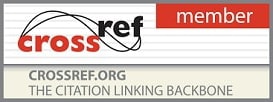P-ISSN: 2349-6800, E-ISSN: 2320-7078
Journal of Entomology and Zoology Studies
2016, Vol. 4, Issue 5
Laboratory colonization of Lucilia sericata (Meigen) (Diptera: Calliphoridae) strain from Assiut, Egypt
Mohamed Elshehaby, Mahran Tony, Abdel-Rahman Sultan, Abdel-baset and M. A. Abdel-Reheem
The blowfly Lucilia sericata has a long history in medicine and its maggots have been used in wound healing. Considering the significance of maggot therapy, establishing an insectary for mass rearing of larvae is important. L. sericata sometimes determine its specific developmental events at precise timing. However, little is known about how the development timing and mass rearing of L. sericata are decided under effect of different food types. This study was carried out to examine effects of three different food types (liver, beef and meat) on the developmental timing and number of green bottle flies L. sericata from April to June 2015 for three generations. Hand catch and net trap baited with chicken viscera and cattle liver were used to collect adult flies from the field and sent to the laboratory for species identification using specific keys., The parental adult insects 40 flies (25 females and 15 males) were reared in cage (40Χ40Χ40 cm) at 30±4 °C average temperature, 80%±10 relative humidity and 12 h photoperiodicity in Al-Azhar University, Assiut. We found number of batches or egg masses and the rate of development of all stages of cultured of green bottle flies L. sericata increase toward type of diet of meat and green bottle flies favorite meat than liver and beef.
Pages : 875-880 | 1566 Views | 288 Downloads
How to cite this article:
Mohamed Elshehaby, Mahran Tony, Abdel-Rahman Sultan, Abdel-baset, M. A. Abdel-Reheem. Laboratory colonization of Lucilia sericata (Meigen) (Diptera: Calliphoridae) strain from Assiut, Egypt. J Entomol Zool Stud 2016;4(5):875-880.
Related Journal Subscription
Important Publications Links
Important Links










